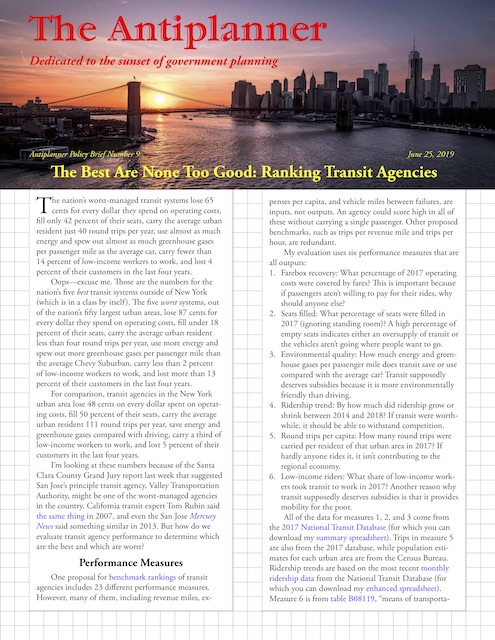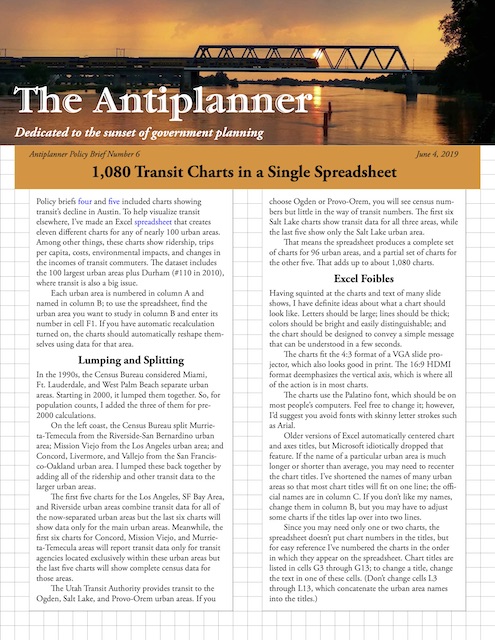Transit ridership in July 2019 was 1.9 percent greater than the same month in 2018, according to data released by the Federal Transit Administration last Friday. The increase was partly due to the fact that July had one more work day in 2019 than in 2018.
In addition, the New York City subway had partly recovered from serious delays and other problems experienced in July 2018, which led to a 5.5 percent increase in New York urban area ridership. Subtract New York and ridership in the rest of the country declined by 1.0 percent. The difference between New York and the rest of the country was underscored by modal numbers: July ridership fell for commuter rail, light rail, hybrid rail, and streetcars, but grew for heavy rail and bus.
Ridership grew in exactly half of the top 50 urban areas. However, ridership for January through July 2019 grew over the same months in 2018 in just 15 of the top 50 urban areas. Continue reading










